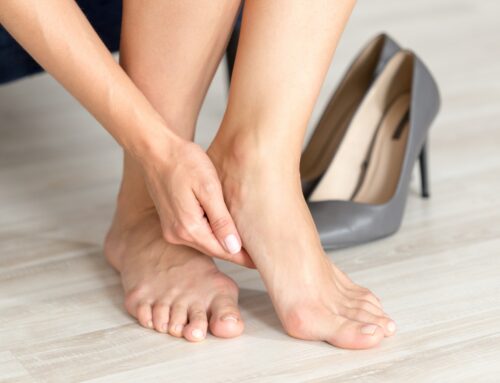The piriformis muscle begins in the lower spine and connects to each thigh bone or femur, helping the hip to rotate and enabling the foot and leg to turn outward. When the piriformis muscle deep in the buttocks spasms, it can push against and aggravate the sciatic nerve, triggering pain, numbness, and tingling all the way down the leg and foot.
If you’re a woman, you are 6 times more likely to experience this syndrome, especially if you’re over 40. The pelvis is generally wider in women resulting in a sharper inward angle of the thigh bone, and pelvic changes during pregnancy can also stress the area. Additionally, hormonal changes can affect the pelvic muscles during pregnancy.
Overuse or injury can also contribute to piriformis syndrome. Athletes such as runners, tennis players and long distance bicyclists can be put repeated pressure on the muscle, causing it to tighten. When this muscle tightens, often there’s a dull ache in the buttocks, and pain when climbing stairs. The pain generally worsens on one side of the body when sitting for long periods, and gets better when lying flat on the back.
When the pain is first felt, cold and heat therapy can help. An ice pack can be placed on the painful area for approximately 20 minutes every 2 to 4 hours as needed. Alternatively, when lying on the stomach, have someone gently massage the area with a large ice cube for 8 to 10 minutes. Icing is recommended after any activities that increase pain. This can be alternated with heat therapy by placing a heating pad on the area for up to 20 minutes.
Typically, treatment includes stretching exercises for the piriformis, hamstrings and hip extensors which can help decrease pain and return range of motion. One simple stretch is to lie on the back with both feet flat on the floor and both knees bent. Pull the right knee up to the chest, hold the knee with the left hand and pull it towards the left shoulder and hold the stretch for 5-30 seconds, repeating for each side. Performing this simple move three times a day can be beneficial.
In addition, deep massage by a physical therapist or other qualified specialist can provide assistance in healing, by enhancing blood flow to the area and decreasing muscle spasm. When care at home doesn’t provide the needed pain relief or healing, it may be time to consult an orthopedic doctor who specializes in the treatment of piriformis syndrome. After an examination and diagnosis, your doctor can suggest other treatments, which can provide relief from the pain and spasms of piriformis syndrome.
If you are experiencing pain that may be due to piriformis syndrome, please call or visit Spine & Orthopedic Center today.







Leave A Comment